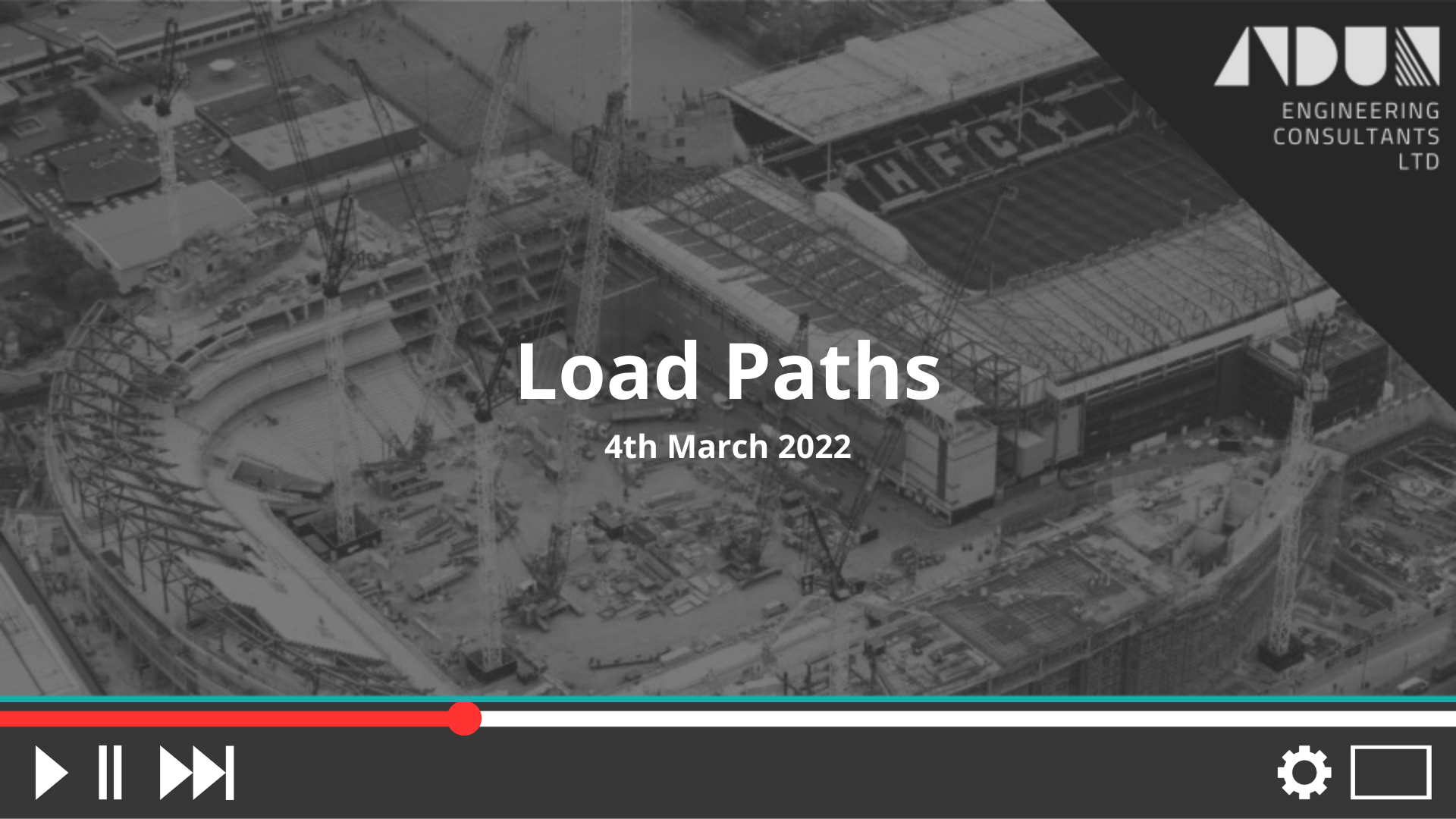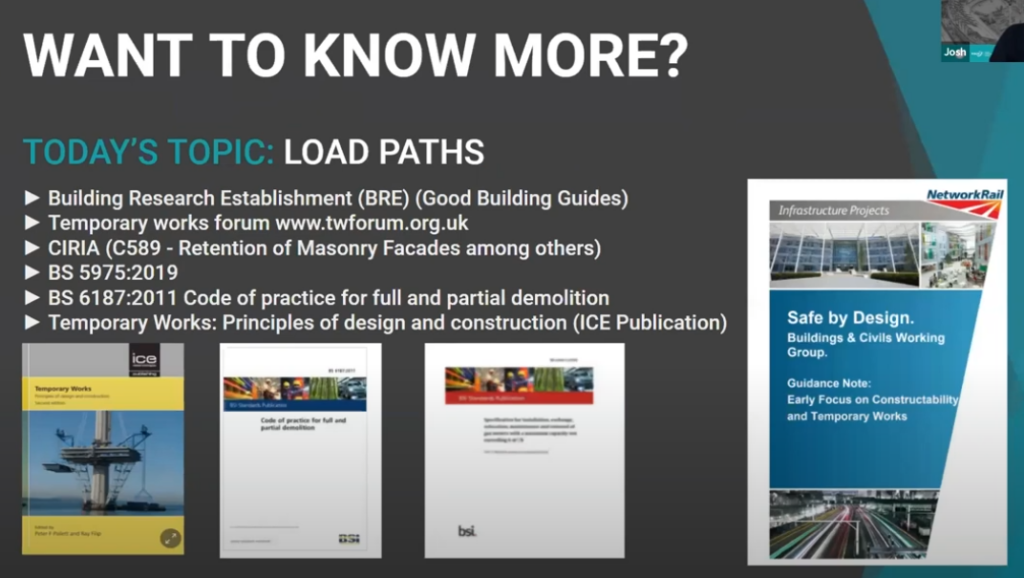
Load paths are the way a load travels from where the load is applied to its final destination (usually the ground).
Load paths enable engineers to understand how a structure will work; incorrect assumptions on load paths can cause structural instability, cracking, failure and unexpected loadings.
Webinar Overview
Panelists: Joshua Martin (Andun Engineering Consultants) and Angus Holdsworth (Andun Engineering Consultants)
Date: 4th March 2022
Duration: 41:29
This webinar was a review of the importance and engineering considerations for Load Paths that included a number of different case studies.
Providing an overview of of what a load path is and the importance this has on engineering projects particularly for demolition projects. This includes where load paths may change regularly during the demolition of the structure, and a look at the references to load paths in BS6187.
Types of Loading
There is a review and analysis of the different types of loading and the design considerations that must be taken into account
- Vertical Loads – Gravity loadings (self weight), Imposed loadings (live load)
- Lateral Loadings – Gravity loadings (self weight), Imposed loadings
- Combined Load Cases
Load Paths Content Outline
Here is a summary of the different topics discussed in the webinar, including a timestamp of where in the video these are included.
- What are Load Paths (0:09)
- BS6187 (02:12)
- Types of Loading (04:30)
- What Needs To Be Considered For Load Paths (10:57)
- How to Design Around Load Paths (13:08)
- Overview and Further Resources (40:18)
Case Studies
The following case studies were outlined during the webinar and were illustrated using drawings, calculations and videos.
- Crawley (21:48)
- Regent Street Flyover Demolition (24:41)
- New Southgate (29:19)
- Spooner Row (33:01)
- Gramophone Works (37:04)
Additional Resources
- Building Research Establishment (BRE) (Good Building Guides)
- Temporary Works Forum (TWF)
- CIRIA (C589 – Retention of Masonry Facades among others)
- BS5975:2019
- Andun Temporary Works Flowchart
- BS 6187:2011 Code of practice for full and partial demolition
- Temporary Works: principles of design and construction (ICE Publication)


